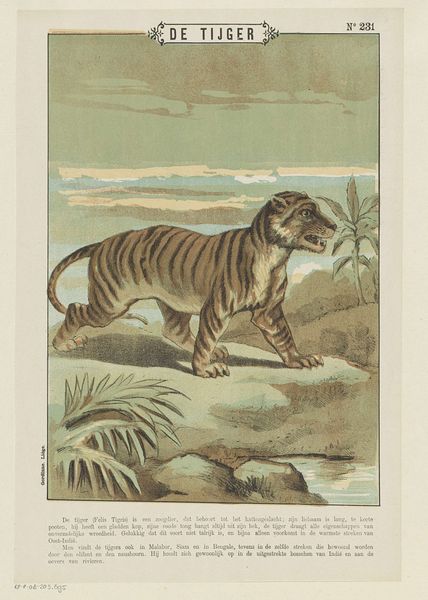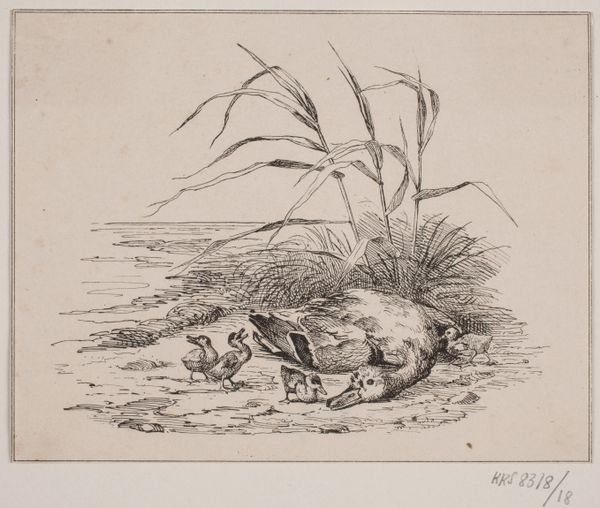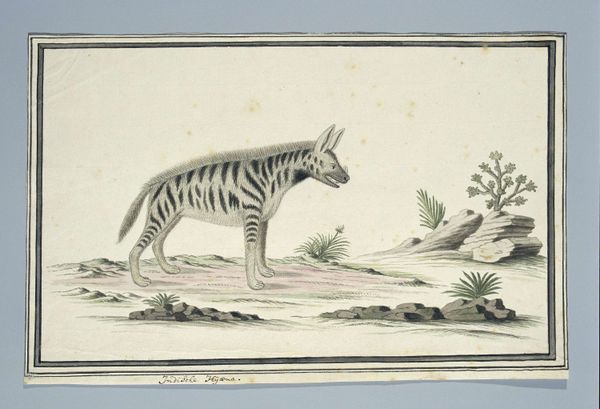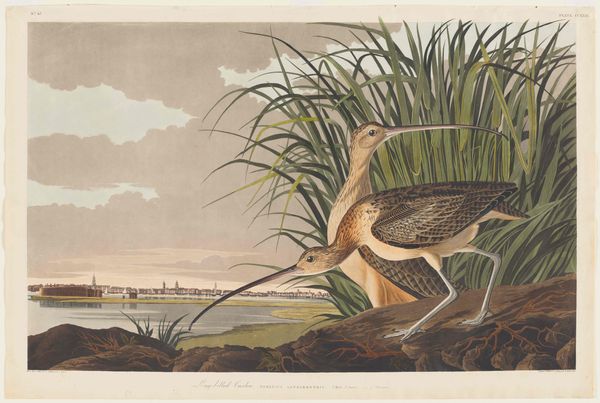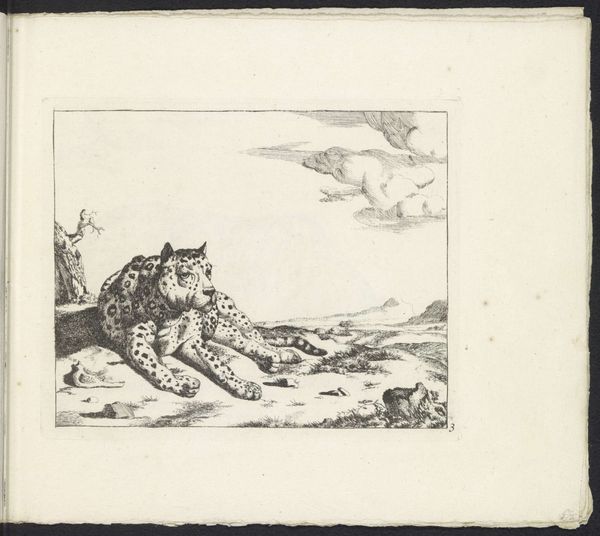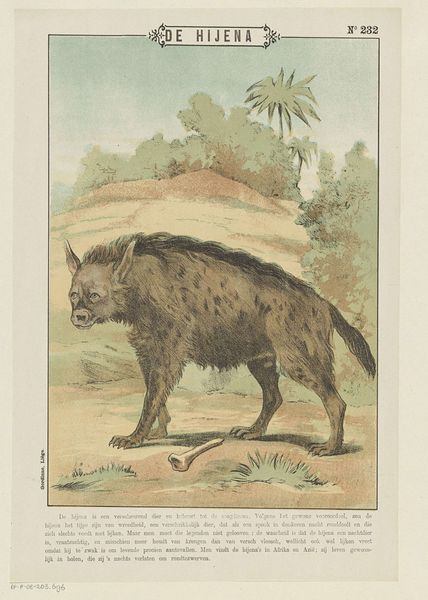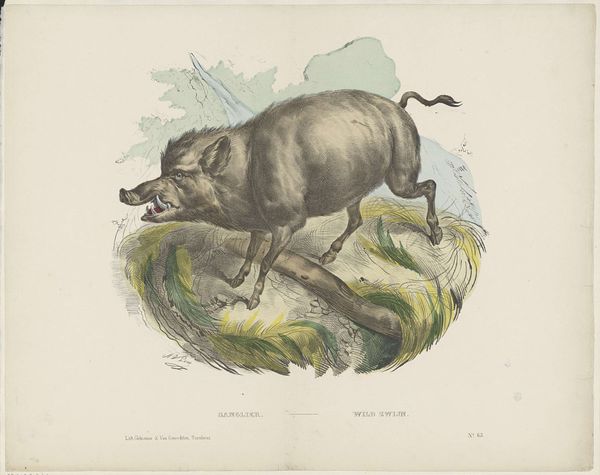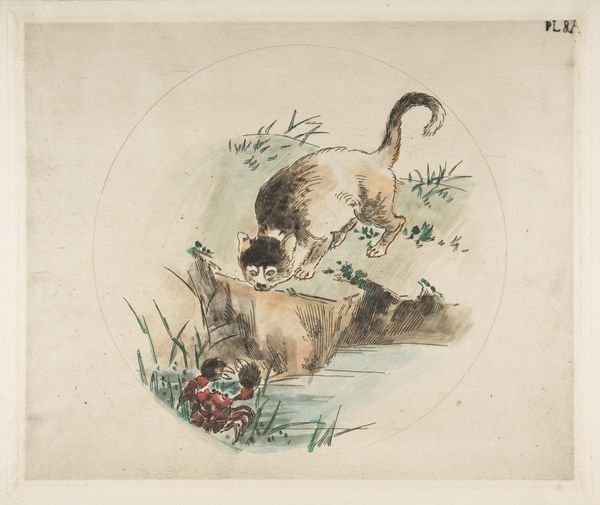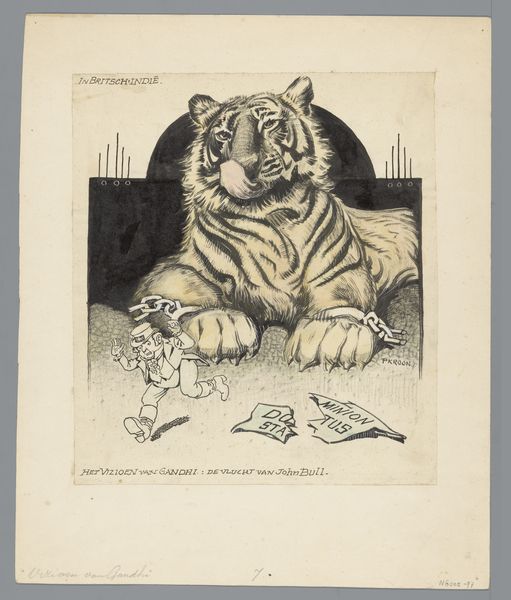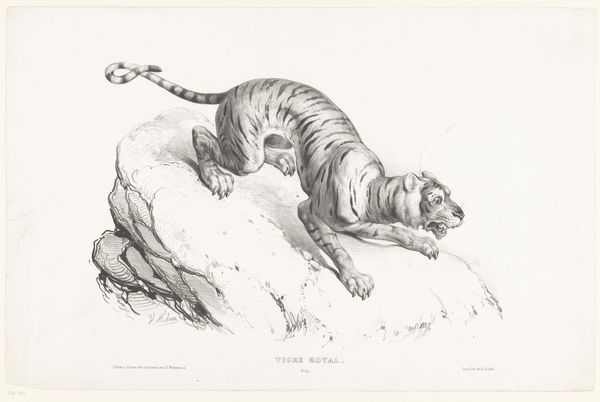
lithograph, print
#
narrative-art
#
animal
#
lithograph
# print
#
landscape
Dimensions: height 400 mm, width 270 mm
Copyright: Rijks Museum: Open Domain
Curator: We're looking at a lithograph titled "De Jaguaar" from circa 1894-1959, attributed to Gordinne, found in the Rijksmuseum collection. Editor: My immediate thought? This feels surprisingly gentle. Given the subject, I was expecting something more overtly fierce, but there's a calmness to it. The landscape is soft, the colors muted... it's a rather docile scene. Curator: That gentleness, I think, reflects its original function, perhaps as a didactic image or popular print meant for mass consumption. Note how the surrounding inscription styles the animal to the exotic. It would shape colonial perceptions of exotic wildlife, making them seem less threatening, maybe even romanticizing their place in a distant, unfamiliar world. Editor: You're right, it does romanticize it. And consider the iconography: the jaguar, in many cultures, is a symbol of power, of the unknown, and often of death and rebirth. Yet here, it's presented almost like a domestic cat, albeit one with a kill. That contrast is quite telling. This juxtaposition dilutes some of the traditionally darker symbolisms attached to jaguars. Curator: Exactly! By domesticating the image, it made the concept of the jaguar – and by extension, the 'wild' lands where they reside – more palatable for European audiences. It reduces the power that these indigenous images and landscapes might have had. Editor: There is the landscape behind too. Although simplistic, the landscape in itself adds symbolic layers. Water, suggesting life and passage; distant hills invoking the unknown journey ahead. I almost want to say it recalls journeys, be they geographical or spiritual. Curator: That's an astute observation. Even in a seemingly straightforward depiction, there are complex social and symbolic histories layered within the imagery. It represents a period, class, and ideology with ease. Editor: I find it interesting that an image intended for broad distribution contains so much to unpack now, a century or more later. Curator: It certainly gives you pause to think about how these historical prints were received and what socio-political statements are imbedded in their representation.
Comments
No comments
Be the first to comment and join the conversation on the ultimate creative platform.
